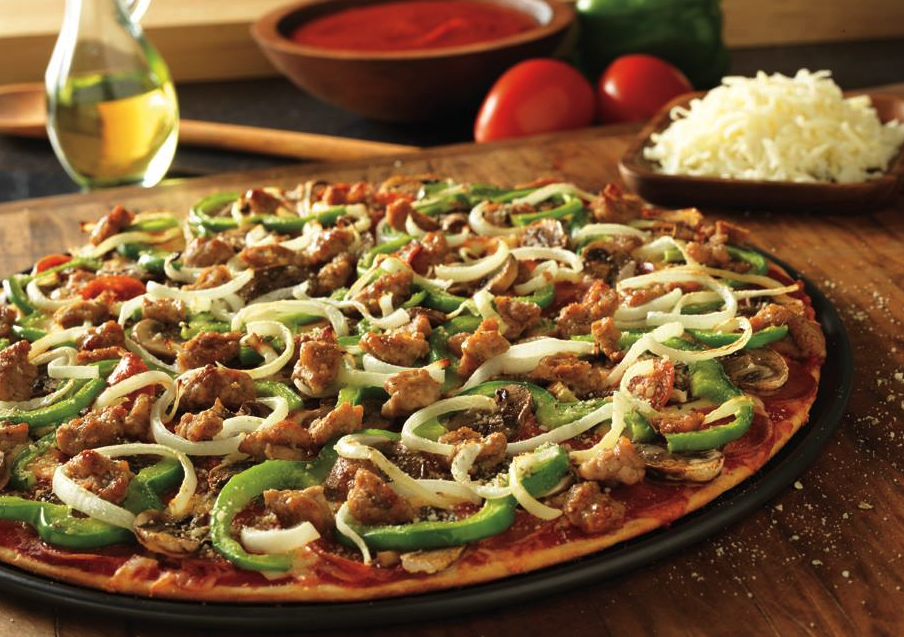Donatos and its sister companies Agápe Automation and Grote Company have partnered with robotics company Appetronix to create a fully autonomous pizza vending machine.
Although still in development, the model will resemble Toronto-based Appetronix’s Asian cuisine bot RoWok, a standalone robotic wok system that can make up to 350 bowls between supply refills.
“If we could do Asian, we could do anything,” said Appetronix CEO Nipun Sharma on development processes. Sharma relayed the hardest cuisine to automate was Asian based on experience due to “the variability of ingredients” and having to create a sensor to handle the variety.
After conquering their first cuisine, Appetronix (formerly known as SJW Robotics) looked to either Mexican or pizza before landing the partnership with Donatos, a deal Sharma calls “a perfect fit.”
“The biggest change in different cuisines is how it’s heated, is it in a wok, a grill, a conveyor oven, or a deep fryer?” explained Sharma. “But the mechanics of how the process works is quite linear, if you think of a quick service industry, there’s a site where things are cut and prepped, then assembled, cooked and plated…so we follow the same process, and the middle part where the food is cooked, that’s the one that changes for every single cuisine type.”

Donatos’ autonomous pizza machine will resemble the Asian cuisine bot RoWok, developed by Appetronix—a standalone robotic wok system that can make up to 350 bowls between supply refills.
How it works: The autonomous pizza machine will contain a refrigerated section where ingredients are stored and another area where ingredients are placed onto the pizza before being baked accordingly. The pies are then transferred to heat-retaining lockers for consumers to grab on the side.
The model is larger than one might picture when thinking of a typical vending machine—about the size of “four or five Coca-Cola machines strapped together” according to Sharma.
It will also feature artificial intelligence that can predict when maintenance will be needed as well as provide personalized recommendations and inventory management.
The goal is “to be real estate agnostic” said Donatos CEO Tom Krouse. Designed for non-traditional, high-traffic areas such as campuses, hotels, offices and hospitals.
“For us, strategically, this doesn’t take the place of a standard franchise, we’re a growing franchise, but this fills in the gaps,” said Krouse, adding that the new pizza maker model will present further franchising opportunities.
The 176-unit chain currently has 38 franchise partners and locations in 27 states. The first autonomous pizza machine will debut in Donatos’ hometown of Columbus, Ohio. Krouse estimates an official launch by the end of the year, with potential for hundreds of locations in the future.
Founded by Jim Grote in 1963, Donatos continues to invest in technological advances in kitchen automation. Grote invented and patented the Peppamatic, which initiated the launch of the Grote Company in 1972, and today is the industry-standard pepperoni slicer in frozen pizza manufacturing.
While the Grote company focuses on manufacturing industrial-level foodservice equipment, Agápe Automation hones in on back-of-house operations. The Agápe group launched the Smart Saucer in 2022, that automatically draws and dispenses sauce onto pizza crust.
In addition, Grote opened the Edge Innovation Hub in Ohio in 2018. The facility is home to Grote’s core companies as well as other businesses dedicated to new-age industry automation from robotics to 3D food printing.
“We are truly honored to partner with the Grote family,” said Shamur reflecting on the collaboration with the Grote company and Agápe. “The collective experience of our combined teams now has an amazing platform to dramatically transform the restaurant industry and accelerate our collective growth strategy.”
Pizza automation is increasingly gaining popularity and traction. Several other companies like Pizza Forno, Piestro, and Stellar Pizza have also presented vending machine technology, aiming to break barriers on how and where consumers can purchase pies on the fly.


